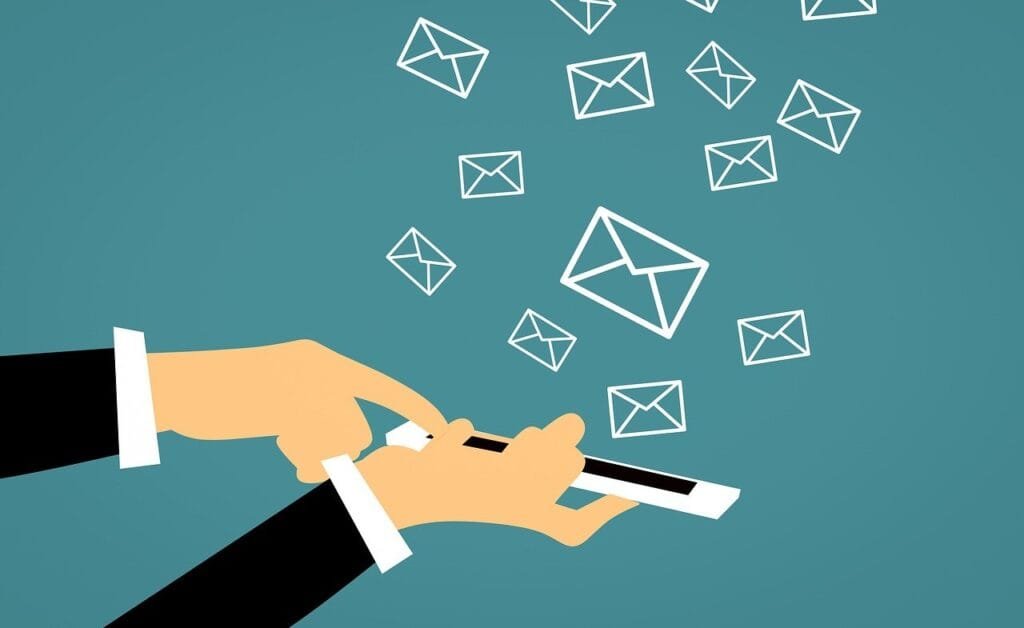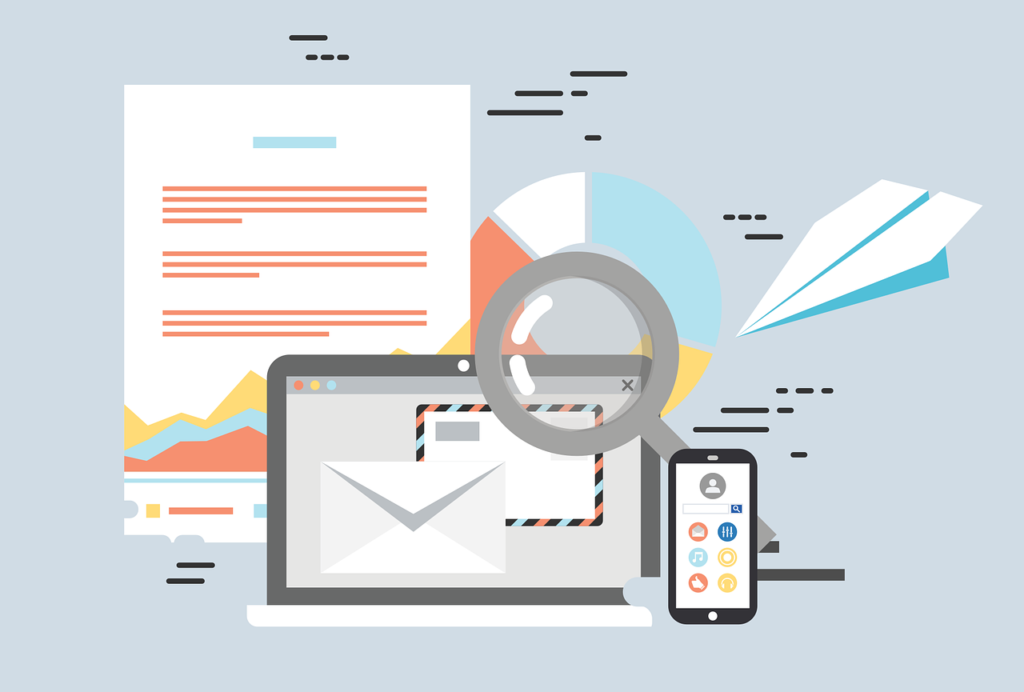- 1. What Percentage of Consumers Check Their Email Daily?
- 2. What Is the Average ROI of Email Marketing?
- 3. How Do Personalized Subject Lines Impact Open Rates?
- 4. Have Marketers Seen an Increase in Email Engagement?
- 5. How Significant Are Mobile Opens in Email Marketing?
- 6. What Impact Do Segmented Campaigns Have on Open Rates?
- 7. What Are the Open Rates for Welcome Emails?
- 8. How Effective Are Abandoned Cart Emails?
- 9. Do Consumers Prefer Receiving Promotional Emails?
- 10. What Percentage of Email Marketing Revenue Comes from Automated Emails?
- 11. Do Emojis in Subject Lines Affect Open Rates?
- 12. How Do Interactive Emails Impact Engagement?
- 13. How Important Is the Subject Line in Email Marketing?
- 14. How Does Personalization Affect Click-Through Rates?
- 15. Which Marketing Channel Drives the Most Conversions?
- 16. How Does Email Marketing Impact Customer Retention?
- 17. How Frequently Do Marketers Send Emails?
- 18. How Effective Are Transactional Emails?
- 19. What Is the Average Open Rate Across All Industries?
- 20. How Does Video Content Affect Email Click Rates?
- 21. What Is the Best Time to Send Emails?
- 22. How Many Small Businesses Use Email Marketing?
- 23. What Is the Average Click-Through Rate for Email Marketing?
- 24. How Effective Is Email for B2B Marketers?
- 25. How Many Consumers Use Coupons from Marketing Emails?
- 26. How Does Email Marketing Compare to Social Media for Customer Acquisition?
- 27. How Prevalent Is Email for Content Distribution Among B2B Marketers?
- 28. What Impact Do Social Sharing Buttons Have on Email Click-Through Rates?
- 29. What Is the Average Unsubscribe Rate for Email Marketing?
- 30. How Effective Is A/B Testing in Email Marketing?
- We got all the latest Marketing Stats here:
Email marketing remains one of the most powerful tools in a marketer’s arsenal. With its impressive return on investment and direct line to consumers, it’s no wonder that businesses continue to rely heavily on email to drive engagement and sales. But what are the key statistics that every marketer should know in 2024 to make the most out of their email campaigns? In this article, we’ll dive into the most important email marketing stats, breaking them down in a way that’s easy to understand and actionable.
1. What Percentage of Consumers Check Their Email Daily?

91% of consumers check their email daily. This staggering number highlights the incredible reach of email as a marketing tool. With such a high percentage of people regularly engaging with their inbox, email marketing provides a direct and consistent way to connect with your audience. This daily habit makes email a prime channel for delivering timely and relevant content, ensuring that your messages are seen by a significant portion of your target market.
2. What Is the Average ROI of Email Marketing?
Email marketing has an average ROI of $42 for every $1 spent. This impressive return on investment demonstrates the efficiency and effectiveness of email campaigns. For every dollar invested in email marketing, businesses can expect to see a substantial return, making it one of the most cost-effective marketing channels available. By focusing on crafting compelling content and optimizing your email strategies, you can maximize your ROI and drive significant revenue growth.
3. How Do Personalized Subject Lines Impact Open Rates?
Personalized email subject lines generate 50% higher open rates. Personalization is key to capturing your audience’s attention. By tailoring your subject lines to include the recipient’s name or other relevant details, you can significantly boost your open rates. This approach makes your emails feel more personal and engaging, increasing the likelihood that recipients will take the time to read your message.
4. Have Marketers Seen an Increase in Email Engagement?
78% of marketers have seen an increase in email engagement over the past year. This statistic underscores the growing importance of email marketing in the digital landscape. As more marketers refine their strategies and leverage advanced tools and analytics, they’re seeing improved engagement from their email campaigns. This trend highlights the need to continually optimize and adapt your email marketing efforts to keep pace with industry advancements and consumer expectations.
5. How Significant Are Mobile Opens in Email Marketing?
Mobile opens account for 46% of all email opens. With nearly half of all emails being opened on mobile devices, it’s crucial to ensure that your emails are mobile-friendly. This means using responsive design, concise copy, and clear calls-to-action that are easy to tap on a small screen. By optimizing your emails for mobile, you can enhance the user experience and increase the likelihood of engagement from mobile users.
6. What Impact Do Segmented Campaigns Have on Open Rates?
Segmented email campaigns have a 14.31% higher open rate than non-segmented campaigns. Segmentation allows you to tailor your messages to specific groups within your audience, making your emails more relevant and engaging. By categorizing your subscribers based on their interests, behaviors, or demographics, you can create targeted campaigns that resonate more effectively, leading to higher open rates and better overall performance.
7. What Are the Open Rates for Welcome Emails?
Welcome emails have an average open rate of 82%. The welcome email is often the first point of contact between your brand and a new subscriber, making it a critical component of your email marketing strategy. With such high open rates, it’s essential to make a strong first impression. Use your welcome email to introduce your brand, set expectations, and provide valuable information that encourages further engagement.
8. How Effective Are Abandoned Cart Emails?
Abandoned cart emails have a 4.64% conversion rate. These emails target customers who have added items to their cart but haven’t completed the purchase. By reminding them of their intended purchase and offering incentives like discounts or free shipping, you can encourage them to return to your site and complete the transaction. The relatively high conversion rate of abandoned cart emails makes them a valuable tool for recovering potentially lost sales.
9. Do Consumers Prefer Receiving Promotional Emails?
49% of consumers want to receive promotional emails from their favorite brands. Nearly half of all consumers enjoy receiving promotional content via email. This preference highlights the importance of providing valuable offers and deals through your email campaigns. By regularly sharing promotions, discounts, and exclusive deals, you can keep your audience engaged and drive repeat business.
10. What Percentage of Email Marketing Revenue Comes from Automated Emails?

Automated emails account for 21% of email marketing revenue. Automation allows marketers to send timely and relevant messages based on user behavior, preferences, and actions. This approach can significantly enhance the effectiveness of your email campaigns, leading to higher engagement and increased revenue. By leveraging automation, you can create more personalized and efficient marketing strategies.
11. Do Emojis in Subject Lines Affect Open Rates?
Emails with emojis in the subject line have a 56% higher open rate. Emojis can make your subject lines stand out in a crowded inbox and convey emotions or themes that words alone might not capture. When used appropriately, they can add a touch of personality and fun to your emails, making them more appealing to recipients. However, it’s essential to use emojis sparingly and ensure they align with your brand’s tone and message.
12. How Do Interactive Emails Impact Engagement?
Interactive emails increase click-to-open rates by 73%. Adding interactive elements like quizzes, polls, and image carousels can significantly boost engagement. These elements encourage recipients to interact directly with your email content, leading to higher click-to-open rates. Interactive emails provide a more engaging and dynamic experience, making your messages more memorable and increasing the likelihood of further interaction.
13. How Important Is the Subject Line in Email Marketing?
47% of email recipients open an email based on the subject line alone. The subject line is often the first impression your email makes, and it plays a critical role in determining whether it gets opened or ignored. Crafting compelling, clear, and concise subject lines that pique curiosity or offer value can significantly improve your open rates. It’s crucial to test different subject lines to see which ones resonate best with your audience.
14. How Does Personalization Affect Click-Through Rates?
Emails with personalized content improve click-through rates by 14%. Personalization goes beyond just using the recipient’s name; it involves tailoring the email content to individual preferences, behaviors, and past interactions. By delivering highly relevant content, you can enhance the user experience and encourage more clicks. Personalization can include product recommendations, personalized offers, and dynamic content that changes based on the recipient’s profile.
15. Which Marketing Channel Drives the Most Conversions?
Email marketing drives more conversions than any other marketing channel, including search and social. This statistic underscores the power of email in converting leads into customers. Email marketing allows for direct and personalized communication, which can effectively guide recipients through the sales funnel. By focusing on creating compelling email content and optimizing your campaigns, you can drive more conversions and achieve better results compared to other channels.

16. How Does Email Marketing Impact Customer Retention?
80% of business professionals believe that email marketing increases customer retention. Email marketing is an excellent tool for nurturing relationships with existing customers. By providing valuable content, exclusive offers, and personalized experiences, you can keep your customers engaged and loyal to your brand. Regular communication through email helps maintain a strong connection with your audience, leading to higher customer retention rates.
17. How Frequently Do Marketers Send Emails?
35% of marketers send their customers 3-5 emails per week. Finding the right email frequency can be challenging, as it depends on your audience’s preferences and the type of content you provide. While some audiences may appreciate frequent updates, others might find it overwhelming. It’s essential to monitor your email metrics and adjust your frequency accordingly to avoid email fatigue and ensure your messages remain well-received.
18. How Effective Are Transactional Emails?
Transactional emails have 8x more opens and clicks than any other type of email. Transactional emails, such as order confirmations, shipping notifications, and password resets, are highly relevant and expected by recipients. Their importance and timeliness result in higher open and click rates compared to promotional emails. Leveraging transactional emails to include additional marketing messages or personalized recommendations can further enhance their effectiveness.
19. What Is the Average Open Rate Across All Industries?
The average email open rate across all industries is 21.33%. This benchmark provides a reference point for evaluating the performance of your email campaigns. While open rates can vary significantly depending on the industry, audience, and type of email, aiming for an open rate above the average can indicate that your campaigns are performing well. Analyzing your open rates in the context of industry standards can help you identify areas for improvement.
20. How Does Video Content Affect Email Click Rates?

Emails with video content increase click rates by 300%. Incorporating video into your emails can dramatically boost engagement. Videos are highly engaging and can effectively convey complex information, showcase products, or tell a compelling story. Including a video in your email can capture your audience’s attention and encourage them to click through to watch the content, leading to higher click rates and better overall performance.
21. What Is the Best Time to Send Emails?
The best time to send emails is between 9 AM and 11 AM. Timing can significantly impact the success of your email campaigns. Sending emails during peak engagement times can increase the likelihood that your messages will be seen and acted upon. While this timeframe is a general guideline, it’s important to test and analyze your own email send times to determine when your specific audience is most responsive.
22. How Many Small Businesses Use Email Marketing?
65% of small businesses use email marketing to connect with their customers. Email marketing is a valuable tool for small businesses looking to build and maintain relationships with their audience. It offers a cost-effective way to reach customers, share updates, and promote products or services. By leveraging email marketing, small businesses can enhance their communication efforts and drive growth.
23. What Is the Average Click-Through Rate for Email Marketing?
The average click-through rate for email marketing is 2.5%. Click-through rates measure the effectiveness of your email content in driving recipients to take action. While this average can vary based on industry and campaign type, aiming to exceed the average click-through rate can indicate that your emails are resonating well with your audience. Testing different elements of your emails, such as content, design, and calls-to-action, can help improve your click-through rates.
24. How Effective Is Email for B2B Marketers?
59% of B2B marketers say email is their most effective channel for generating revenue. Email marketing is particularly powerful in the B2B space, where building and nurturing relationships is key to driving sales. B2B email campaigns can deliver targeted content, personalized recommendations, and valuable industry insights, helping to establish trust and credibility with potential clients. By focusing on providing value through your emails, you can drive significant revenue growth in the B2B sector.
25. How Many Consumers Use Coupons from Marketing Emails?
70% of consumers say they’ve made use of a coupon or discount from a marketing email in the past week. Offering coupons and discounts through email marketing can be a highly effective way to drive sales and encourage repeat business. Consumers are often on the lookout for deals and promotions, and providing them through email can enhance the value of your messages and incentivize purchases.
26. How Does Email Marketing Compare to Social Media for Customer Acquisition?

Email marketing is 40 times more effective at acquiring customers than Facebook or Twitter. This statistic highlights the unparalleled potential of email marketing for customer acquisition. While social media platforms are excellent for engagement and brand awareness, email marketing offers a direct and personalized approach that can more effectively convert leads into customers. By focusing on building a strong email list and creating targeted campaigns, you can achieve better customer acquisition results.
27. How Prevalent Is Email for Content Distribution Among B2B Marketers?
93% of B2B marketers use email to distribute content. Email remains a cornerstone of content distribution in the B2B sector. By sharing valuable content, such as whitepapers, case studies, and industry reports, through email, B2B marketers can position themselves as thought leaders and build trust with their audience. This approach not only drives engagement but also helps to nurture leads and move them through the sales funnel.
28. What Impact Do Social Sharing Buttons Have on Email Click-Through Rates?
Emails that include social sharing buttons have a 158% higher click-through rate. Integrating social sharing buttons into your emails can significantly boost engagement. These buttons encourage recipients to share your content with their networks, extending the reach of your messages and driving more traffic back to your website. By making it easy for subscribers to share your content, you can amplify your email marketing efforts and increase your overall impact.
29. What Is the Average Unsubscribe Rate for Email Marketing?
The average unsubscribe rate for email marketing is 0.17%. This relatively low rate indicates that most subscribers remain engaged with the emails they receive. However, it’s important to monitor your unsubscribe rate regularly to identify any potential issues with your email content or frequency. Keeping your unsubscribe rate low involves providing valuable and relevant content, respecting subscriber preferences, and avoiding spammy practices.
30. How Effective Is A/B Testing in Email Marketing?
Email marketing campaigns using A/B testing see a 37% increase in ROI. A/B testing allows you to experiment with different elements of your emails, such as subject lines, content, images, and calls-to-action, to determine what resonates best with your audience. By analyzing the results and optimizing your campaigns based on these insights, you can significantly improve your email performance and achieve a higher return on investment.
We got all the latest Marketing Stats here:
Read next
- Pinterest SEO for Travel Blogs and Businesses
- Social Media Signals and SEO for Travel Websites
- How to Use Analytics to Understand Travel Seasonality
- Analyzing User Behavior and its SEO Implications
- Using Funnel Analysis for Better Conversion Rates






















Comments are closed.